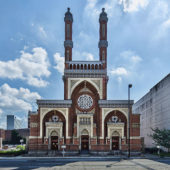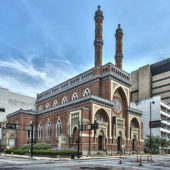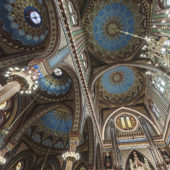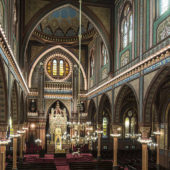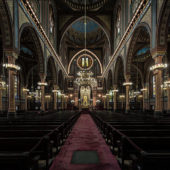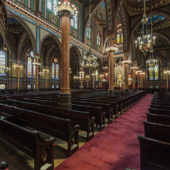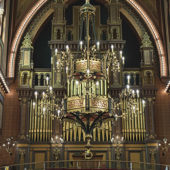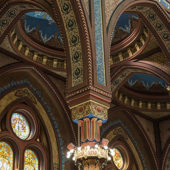Formerly known as the Plum Street Temple, the synagogue of Isaac M. Wise.
The Isaac M. Wise Temple was formerly known at the Plum Street Temple. The Ohio State historical marker outside the Temple says:
“This historic synagogue symbolizes the work of one of the most important figures in nineteenth-century American Jewry. Isaac Mayer Wise (1819-1900). The Bohemian-born rabbi’s many achievements include the establishment of the Union of American Hebrew Congregations in 1873. Hebrew Union College in 1875, and the Central Conference of American Rabbis in 1889. Wise’s leadership made Cincinnati a center for Reform Judaism in America. The Plum Street Temple, designed by Cincinnati architect James Keys Wilson and built in 1865-1866 for the B’nai Yeshurun congregation during Wise’s tenure, is one of the best preserved Moorish Revival buildings in the United States. It was designated a National Historic Landmark in 1975.”
In 1840 a group of German Jewish immigrants in Cincinnati organized congregation K.K. B’nai Yeshurun. At first they worshiped in a home. A year later they purchased and renovated a Federal-style, brick four-story row house. By 1848 the congregation had grown and they built a Gothic Revival style synagogue on Lodge Street. In 1853 the congregation engaged Rabbi Isaac Mayer Wise as its spiritual leader. Prior to the Civil War, the 200 families of K. K. B’nai Yeshurun had envisioned a magnificent building to house their growing twenty-year-old congregation which had already gained national prominence because of their rabbi, Isaac Mayer Wise. That vision was realized when the Plum Street Temple was dedicated on Friday, August 24, 1866.

